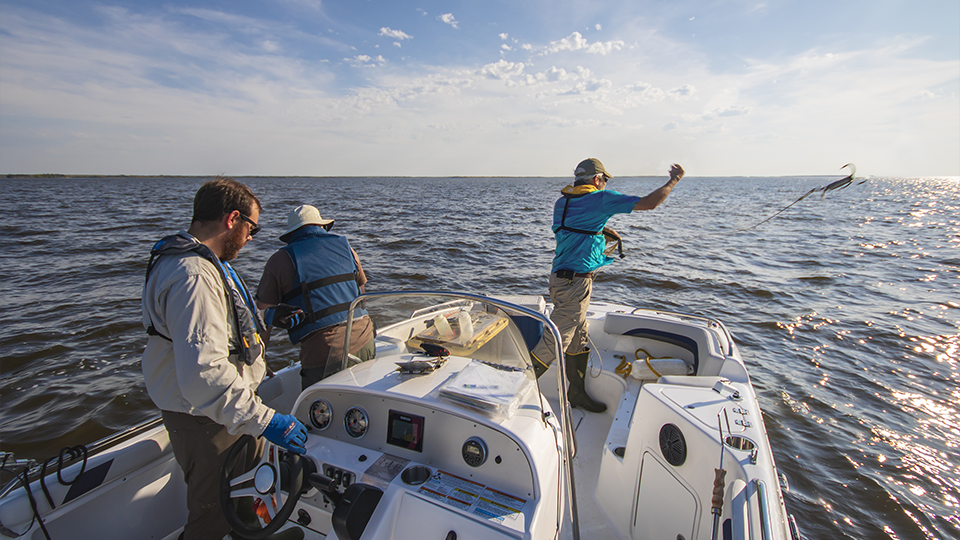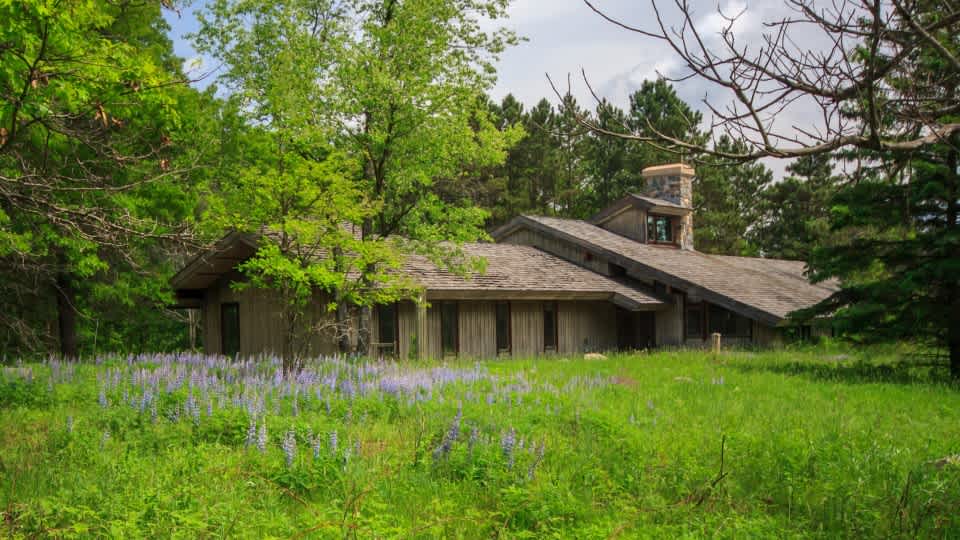
Cores and climate at the St Croix Watershed Research Station
Early this spring, the Science Museum featured the scientists of the St. Croix Watershed Research Station (SCWRS) in its Science Superheroes exhibit, and with good reason: their work studying the region's lakes, rivers, and streams will help us protect our water against climate change and pollution.

The research station, near the St. Croix River.
The SCWRS is a Science Museum research facility near the St. Croix River. It's located a few miles north of Stillwater, Minnesota, but its scientists travel around the state (and the world!) to collect and analyze samples and data from bodies of water.
With a suite of tools that allow them to collect water from all levels of a lake or river, SCWRS researchers gather data on water temperature, chemical content, clarity, acidity, and more. This information allows them to study processes like the cycle of nutrients in bodies of water—too many nutrients, like those in the fertilizers that run off of farm fields, can cause slimy algae to take over a body of water—and the effects of climate change.

SCRWS researchers on a scientific expedition to Greenland.
To understand the effects of climate change, SCRWS scientists have to look at what was happening in lakes and rivers in the past. This helps them understand both how things have changed and what bodies of water were like during periods that may have had similar conditions to the warming we're experiencing today—giving us an idea of what we might expect as our climate continues to warm and change. One of the best ways to explore this ecological history is to collect and study core samples. Core samples are basically tubes of sediment (dirt, sand, and mud) from the bottom of a body of water. Because the layers of sediment are deposited in regular order (older layers of dirt and mud are at the bottom, more recent layers are at the top), they can provide a year-by-year look at ancient climate. A layer with lots of sand and dust might suggest that the region was very dry when that sediment settled to the bottom. Or a layer with lots of organic mud might mean that the lake was growing plenty of plants or algae at the time. The presence of a certain kind of pollen can tell the researchers what plants were growing near the lake that year.

Researchers prepare to collect a core during the winter.
SCRWS scientists collect cores so that the sediment layers stay exactly as they were in nature, then analyze each layer in detail. This intricate history of the bodies of water shows us how our region has changed and how it may change in the future—essential information for making plans to keep our water healthy and protected.
Check out the SCRWS website for more information on the research station and the work done there, or come to the Science Museum when we reopen this fall, and visit the Science Superheroes exhibit yourself!